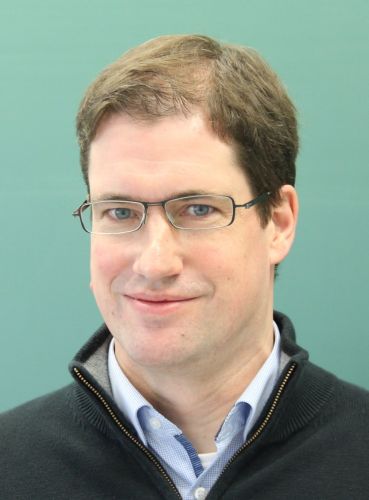Prof. Dr. Johannes Neugebauer
Pofessur für Theoretische Organische Chemie
Organic Chemistry Institute
Germany
Education and Professional Employment:
=================================
1996-2001: Studies in Chemistry, University of Bielefeld, Germany
2001-2003: PhD student, University of Erlangen-Nuremberg, Germany
2003-2006: Postdoc at Vrije Universiteit Amsterdam, The Netherlands
2006-2008: Junior research group leader at ETH Zurich, Switzerland
2009-2011: Associate Professor for Theoretical Chemistry, Leiden University, The Netherlands
2011-2012: Professor (W2) for Theoretical Chemistry at Technical University Braunschweig, Germany
2012: Offer of a full professorship (W3) for Theoretical Chemistry at University of Würzburg, Germany
since 2012: Full Professor (W3) for Theoretical Organic Chemistry at University of Münster, Germany
since 2013: Spokesperson of the Center for Multiscale Theory and Computation (CMTC), University of Münster, Germany
Scientific interests:
=================
Development of and applications of smart quantum chemical methods for selective and efficient calculations on chemical processes in complex environments like solvents, proteins, molecular crystals, or surfaces. Work on subsystem-based Density-Functional Theory and density-based (QM/QM) embedding for ground and excited electronic states, and further development of these methods for molecular/spectroscopic properties.
Awards and Fellowships:
====================
2001-2003: Kekulé-Fellowship of the Fonds der Chemischen Industrie (FCI)
2004-2006: Postdoctoral Fellowship of the German Science Foundation (DFG)
2006: Award of an Emmy Noether grant of the DFG (declined due to relocation to Zurich)
2006-2008: Liebig-Fellowship of the FCI
2009: ADUC prize 2008 of the Working Group of German University Professors for Chemistry
2009: Award of a VIDI grant of the Dutch Research Council
2013: OYGA lectureship of the Lise Meitner-Minerva Center for Computational Quantum Chemistry, Jerusalem
2016: Dirac Medal of the World Association of Theoretical and Computational Chemists (WATOC)
Lecture 9: Johannes Neugebauer
Electron Densities from Subsystem
Density-Functional Theory
Johannes Neugebauer
Organic Chemistry Institute, University of Muenster, Germany
j.neugebauer@uni-muenster.de
Subsystem density functional theory (sDFT) and related electron-density-based embedding techniques provide powerful tools for fully quantum chemical investigations of complex chemical systems, such as molecules in solution, in crystalline environments, or co-factors in proteins [1]. As a fully-grown alternative to Kohn--Sham DFT, sDFT provides access to energies, structures, and properties of such systems.
In this presentation, I will concentrate on the challenges and opportunities of calculating electron densities based on sDFT. While the most straight forward way of applying sDFT with density-based approximations for so-called non-additive kinetic-energy effects becomes increasingly problematic for more and more strongly interacting subsystems [2], recent developments allow to circumvent these problems via different routes.
As specific examples, the advantages of sDFT-based approaches in calculations of protein electron densities [3] and in spin densities and magnetic exchange couplings of organic radical crystals [4] will be discussed.
References
[1] For reviews, see: C.R. Jacob, J. Neugebauer, Subsystem Density-Functional Theory, WIREs Comput. Mol. Sci. 2014, 4, 325-362;
T.A. Wesolowski, S. Shedge, X. Zhou, Frozen-Density Embedding Strategy for Multilevel Simulations of Electronic Structure, Chem. Rev. 2015, 115, 5891-5928.
[2] K. Kiewisch, G. Eickerling, M. Reiher, J. Neugebauer, Topological analysis of electron densities from Kohn-Sham and subsystem density functional theory, J. Chem. Phys. 2008, 128, 044114;
S. Fux, C.R. Jacob, J. Neugebauer, L. Visscher, M. Reiher, Accurate frozen-density embedding potentials as a first step towards a subsystem description of covalent bonds, J. Chem. Phys. 2010, 132, 164101;
D. Schnieders, J. Neugebauer, Accurate Embedding through Potential Reconstruction: A Comparison of Different Strategies, J. Chem. Phys. 2018, 149, 054103.
[3] A. Goez, J. Neugebauer, Benchmarking Electron Densities and Electrostatic Potentials of Proteins from the Three-Partition Frozen Density Embedding Method, J. Chem. Theory Comput. 2016, 12, 4843-4855.
[4] A. Massolle, J. Neugebauer, Subsystem Density-Functional Theory for Interacting Open-Shell Systems: Spin Densities and Magnetic Exchange Couplings, Faraday Discuss, 2020, 224, 201-226.


